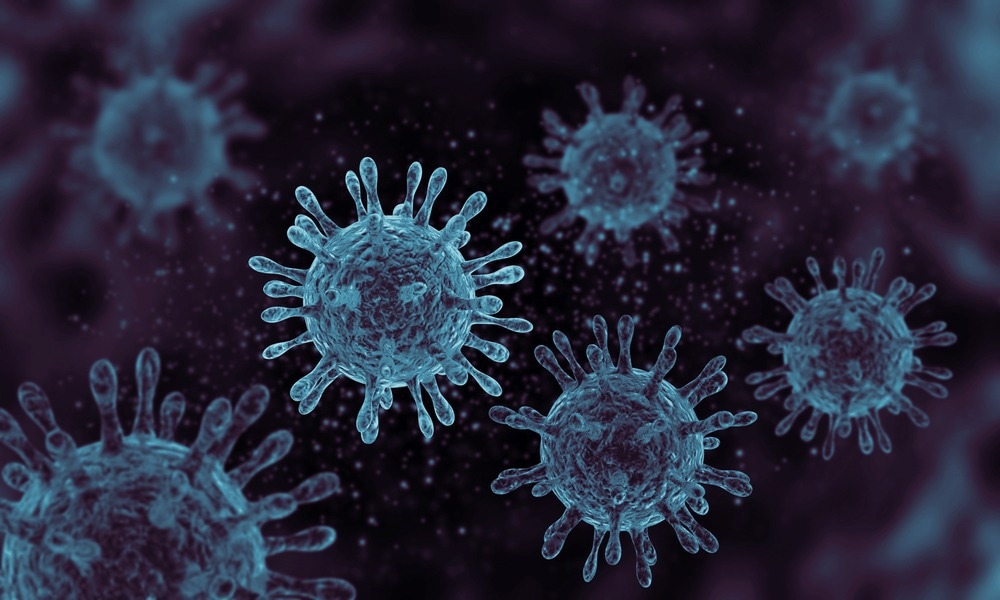Early diagnosis of an infectious viral disease can help the patients and health care professionals monitor the outbreaks accurately and provide treatment at the early stage of a disease, avoiding any detrimental consequences. The accuracy of information is essential while monitoring such diseases to prevent any possible pandemics.

Study: Freestanding Laser-Induced Graphene Ultrasensitive Resonative Viral Sensors. Image Credit: Christina Krivonos/Shutterstock.com
An article published in the journal ACS Applied Materials and Interfaces discussed the fabrication of highly sensitive sensors, freestanding laser-induced graphene (FLIG) flakes, for highly reliable viral detection. Here, severe acute respiratory syndrome coronavirus 2 (SARS-CoV-2) spike proteins were detected by using FLIG flakes.
The FLIG flakes were nonembedded porous graphene foams of 30-micrometer thickness and were generated using polyamide laser irradiation at a low cost. The larger pieces of the FLIG were cut into a cantilever and used as suspended resonators.
Additionally, a protocol was developed for aqueous biological sensing of SARS-CoV-2 spike proteins. Herein, the device was functionalized with coronavirus disease 2019 (COVID-19) antibodies, and the wetting dynamic response of graphene sensors was characterized in buffer solution and water. Moreover, the designed device could specifically detect SARS-CoV-2 spike protein.
The developed graphene sensors showed a mass-dependent frequency response shift of approximately 1 hertz per picogram on being bounded to the SARS-CoV-2 spike proteins. Finally, the graphene sensors demonstrated a limit of detection (LOD) as low as 2.63 picograms. The potential of FLIG platform technology was demonstrated in developing highly accurate graphene sensors with biological applications.
Graphene Sensors Towards the Detection of SARS-CoV-2 Spike Proteins
Graphene is a carbon allotrope that consists of a single sheet of carbon atoms arranged in a two-dimensional (2D) hexagonal lattice, where each atom shares with neighbors three in-plane σ-bonds and an out-of-plane π-bond.
Various techniques were previously reported for producing graphene. Recently, laser irradiation of a polymeric precursor to induce a photochemical and thermal conversion into graphene was added to the fabrication procedures. Graphene obtained in this way is usually called laser-induced graphene. The laser-induced graphene was applied in composites, gas sensors, soft actuators, and many more.
In most fabrication techniques, the laser-induced graphene remains embedded in the substrate, whose removal requires scraping, which either destroys the material’s structure or delaminates into the polymer and disturbs the morphology of the fabricated surface.
COVID-19 is a human infectious disease associated with severe respiratory distress caused by SARS-CoV-2, a single-stranded RNA-enveloped virus. SARS-CoV-2 spike proteins cover the surface of SARS-CoV-2 and bind to the host cell receptor angiotensin-converting enzyme 2 (ACE2), mediating viral cell entry.
The primary technique for diagnosing Coronavirus disease (COVID-19) is the reverse transcription-polymerase chain reaction (RT-PCR) technique. However, this is time-consuming, expensive, and requires professional personnel for operation. Recently, several detection platforms based on graphene sensors were reported for detecting SARS-CoV-2 spike proteins with high selectivity and low LOD
Laser-Induced Graphene Towards Detection of SARS-CoV-2 Spike Proteins
Resonative mass sensors are sensitive even to small masses. Upon binding of mass on these sensors, a frequency shift, which otherwise resonates around their fundamental frequency, is observed. Furthermore, reducing the resonator’s size can improve the sensor’s sensitivity due to its high response to small signals.
In the present study, a FLIG-based resonator was built as a resonative sensor with miniaturized dimensions along with high sensitivity and selectivity toward SARS-CoV-2 spike proteins and their quantification. The FLIG was functionalized with SARS-CoV-2 spike protein antibodies using a pyrene-containing linker that binds strongly to graphene and laser-induced graphene materials.
The functionalization of the graphene sensors with SARS-CoV-2 spike protein antibodies made them selective mass sensors. The functionalized graphene sensor was vibrated at the fundamental frequency initially, and upon binding of SARS-CoV-2 spike proteins, a change in resonance frequency was observed due to added mass.
Thus, FLIG sensors could indicate the existence of SARS-CoV-2 spike proteins and quantify the number of viruses present. The functionalized FLIG demonstrated excellent performance sensing an added mass of 2.63 picograms, calculated to be as few as approximately 5000 viruses.
Conclusion
Overall, the present work demonstrated the fabrication of ultrasensitive graphene sensors for detecting SARS-CoV-2 spike proteins. These graphene sensors were FLIG-based resonators whose mechanical properties and resonance response were outstanding for resonative sensors.
This detection process was optimized for sensing in liquid media. The FLIG was functionalized with COVID-19 antibodies that led to concentration-dependent changes in resonance frequency when exposed to SARS-CoV-2 spike proteins. The functionalized FLIG platform was highly porous and had a low-mass-density structure with exceptional performance sensing.
Moreover, FLIG was obtained at ultralow cost, and the operational principle of the corresponding sensor was simple. Thus, the FLIG technology was suitable as a sensing element in portable graphene sensors to detect viral proteins like SARS-CoV-2 spike proteins, which is an important strategy in pandemic management.
Due to the sensitivity of fabricated graphene sensors, SARS-CoV-2 spike proteins could be quantitatively estimated to obtain valuable information on the disease's severity, stage, and contagion in patients.
Reference
Ben-Shimon, Y., Sharma, C. P., Arnusch, C. J., Ya’akobovitz, A. (2022). Freestanding Laser-Induced Graphene Ultrasensitive Resonative Viral Sensors. ACS Applied Materials & Interfaces. https://pubs.acs.org/doi/10.1021/acsami.2c08302
Disclaimer: The views expressed here are those of the author expressed in their private capacity and do not necessarily represent the views of AZoM.com Limited T/A AZoNetwork the owner and operator of this website. This disclaimer forms part of the Terms and conditions of use of this website.